When he was four years old, Paul Nicklen’s family moved to Kimmirut on Baffin Island, northern Canada; a village so remote that supplies are delivered once a year, by boat. The Nicklens were one of only two non-Inuit families in the tiny community, and with no telephone, radio or TV, Paul’s childhood was spent on the ice, in the company of native fishermen and in awe of the visual majesty of the region. “I learned how to freeze,” he says. It is a skill that has helped him to become one of the world’s foremost photographers of polar wildlife.
“If you want to shoot the best photography of a particular ecosystem, you have to be comfortable wherever you are,” says Nicklen. “If that’s 150ft deep under the ice, you can’t be sitting there fighting for survival. You need to free up your mind.” Wearing a rebreather to avoid producing bubbles, he stays submerged for up to six hours, submitting himself to the same conditions inhabited by his favourite species. To Nicklen, the Arctic is not a forbidding, alien landscape, but a spiritual home: “I’m far more comfortable around bears than, say, on the streets of New York.”
Nicklen’s profound understanding of polar environments has led him to produce some of the most extraordinary wildlife photography ever seen: narwhals duelling among ice floes, dozens of emperor penguins bursting from the water, a dying polar bear rooting through litter. In one now famous series, documented in a viral TED talk, he spent hours photographing a huge and fearsome leopard seal as she attempted to feed him with dead penguins. These and countless other photographs are collected in the forthcoming book, Born to Ice, Nicklen’s most comprehensive monograph to date. To read the book is to experience a kind of snow blindness, as ever more arresting animal portraits stare out from the waves and tundra.
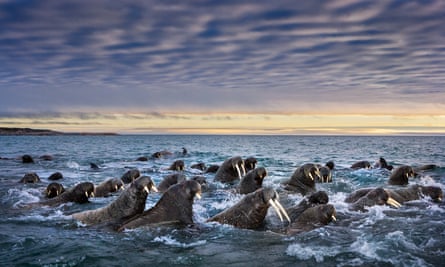
Most of Nicklen’s photographs have been taken on assignment for National Geographic magazine, for whom he has shot 22 stories to date. During this time Nicklen, now 50, has won a catalogue of awards including five World Press Photo prizes and the grand title in the Natural History Museum’s Wildlife Photographer of the Year competition. Along with his TED talk and his 4.4 million Instagram followers, these have given him an unusually high profile for a nature photographer. But for all his public acclaim, the end goal of his work is not recognition of the photographs themselves, but the opportunity to educate and inspire people about the front line of conservation. “Photography has the power to break down the walls of apathy,” he says, “to grab people at the heart and then teach them something. You can change their minds, but you have to make that emotional connection first.”
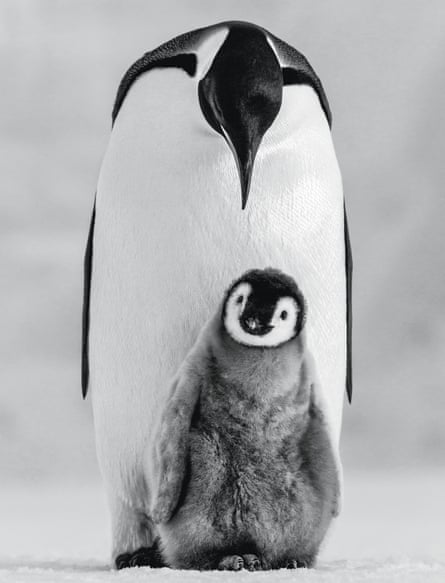
A former marine biologist, Nicklen is painfully aware of the future that faces his beloved Arctic and Antarctic habitats if urgent action isn’t taken. “When people think of sea ice melting, they think of this lifeless substance, like ice in a glass,” he says. “But it’s a very complex substrate. You have up to 300 species of microorganism living in the salt brine channels of a piece of sea ice.” The collapse of this biodiversity is one of his main concerns. “Sea ice is like soil in a garden: the sun’s energy penetrates, and you get algae growing under the ice, and seaweed, which provides the food base for zooplankton. Billions of pounds of amphipods and copepods are growing under there, and it’s the same with krill. Then you have the polar cod that feed on the krill, and from there you have beluga whales, narwhals, bearded seals, Greenland sharks. If we lose the ice, we stand to lose the entire ecosystem.”
Growing up near the Arctic Circle, Nicklen has a more immediate understanding of climate change. He recalls being a child in the 1970s, joining the Inuit as they travelled from Baffin Island to Greenland to trade huskies, using an ice bridge across the sea. “Since the 80s, those Inuit haven’t been able to use that bridge,” he says. “It’s gone. For the first time in recorded history, the entire Greenland icecap is melting.”
Nicklen was taught survival skills by his Inuit neighbours as a child, and he still relies on the expertise of Inuits and Canadian First Nations for his work. Inuits and their sled teams feature prominently in his photographs, and their first-hand experience of climate change shapes his thinking. “When we were working in Greenland, at 81 degrees north,” he says, “the Inuit were sitting there fishing. One of them pulled up a fish, and all of a sudden they’re getting their iPhones out of their polar bear pants, because it’s a species none of them has ever seen before.” The anecdote has all the drama and urgency of a Nicklen photograph: a snapshot of life under threat of irreparable change.
With this urgency in mind, In 2014 Nicklen and his partner, fellow photographer Cristina Mittermeier, founded SeaLegacy, an organisation devoted to raising awareness about marine conservation. “We think about money, love, sex, every minute of every day.” he says, “We have to be thinking about money, love, sex and the environment.”
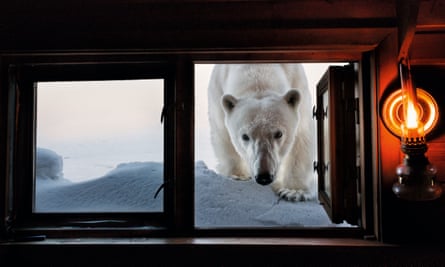
Although the challenges seem vast, Nicklen has built his glittering career on the belief that change can begin with one photograph of one individual creature. He recalls with particular delight his experience of tracking and photographing a spirit bear – a vanishingly scarce and elusive subspecies of the American black bear that lives in the coastal forests of British Columbia. “To watch this bear walking through the forest, eating skunk cabbage, going to sleep under a cedar tree, is something I’ll never forget,” says Nicklen. “He was having these little puppy dreams with his breath fogging up my lens, and I just knew I was getting the visual assets that will make people care.”
For information about SeaLegacy and for works available as fine art, contact zoe@sealegacy.org

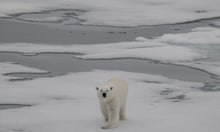



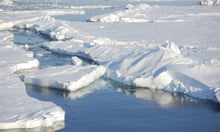


Comments (…)
Sign in or create your Guardian account to join the discussion